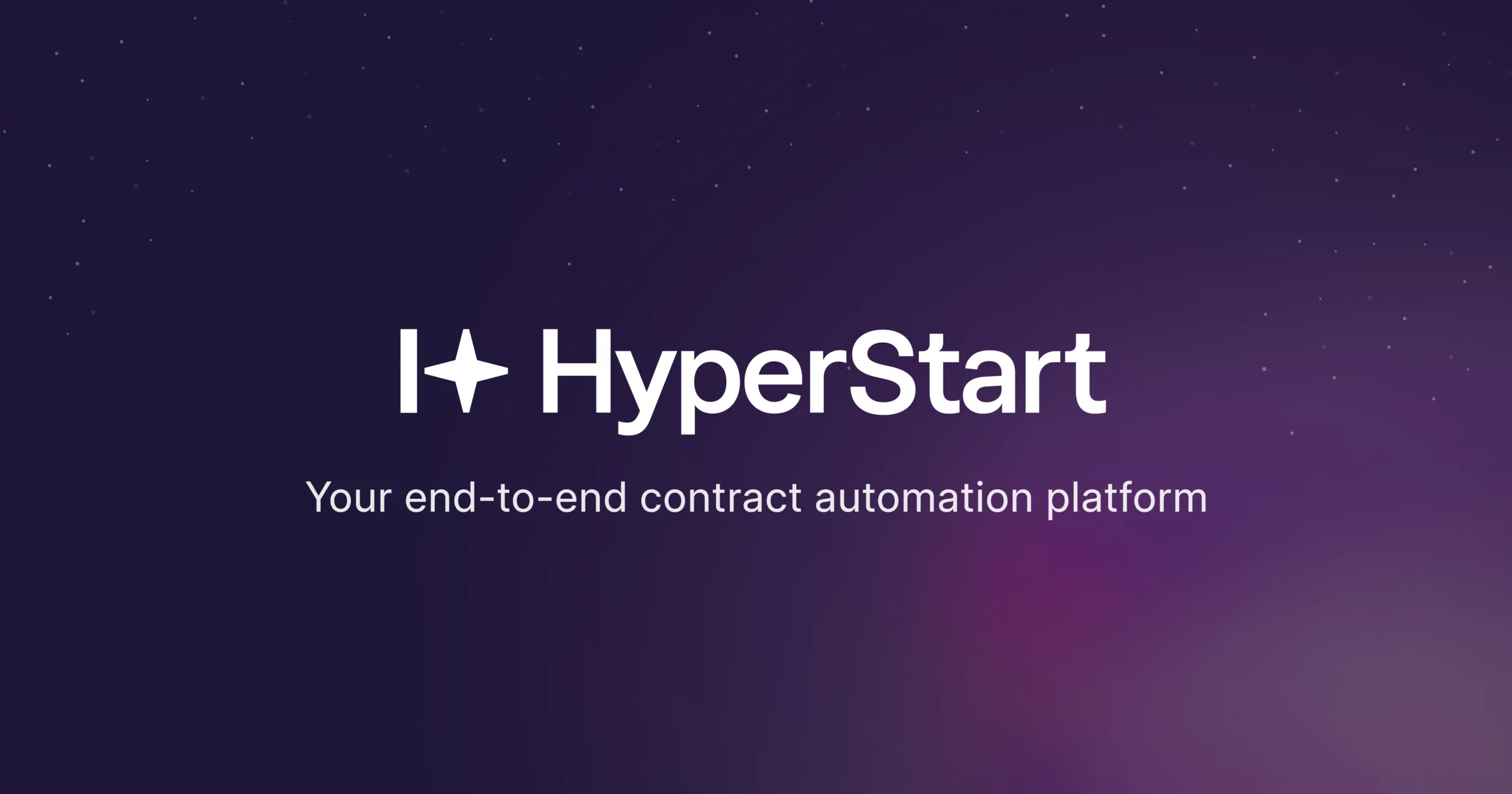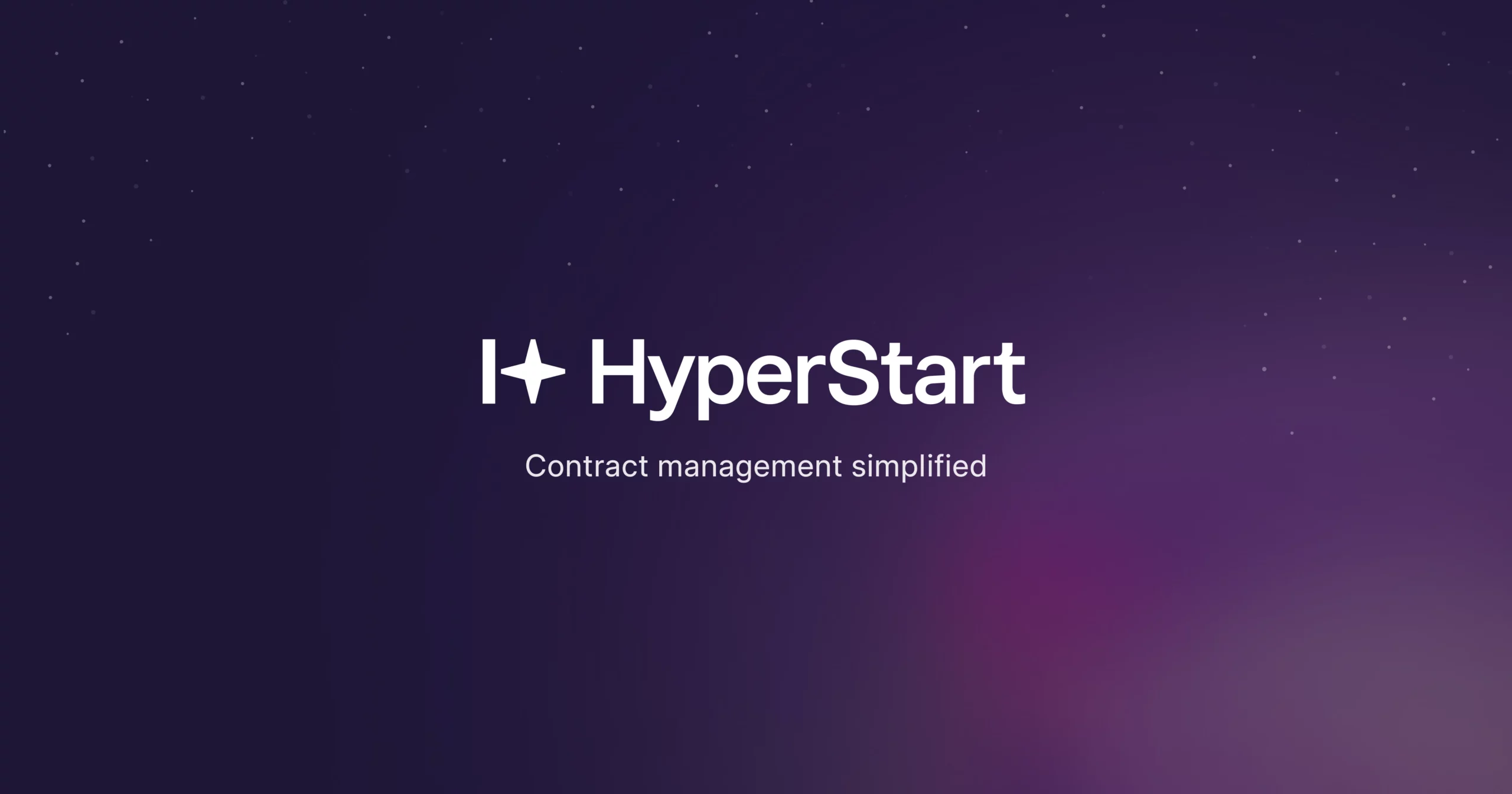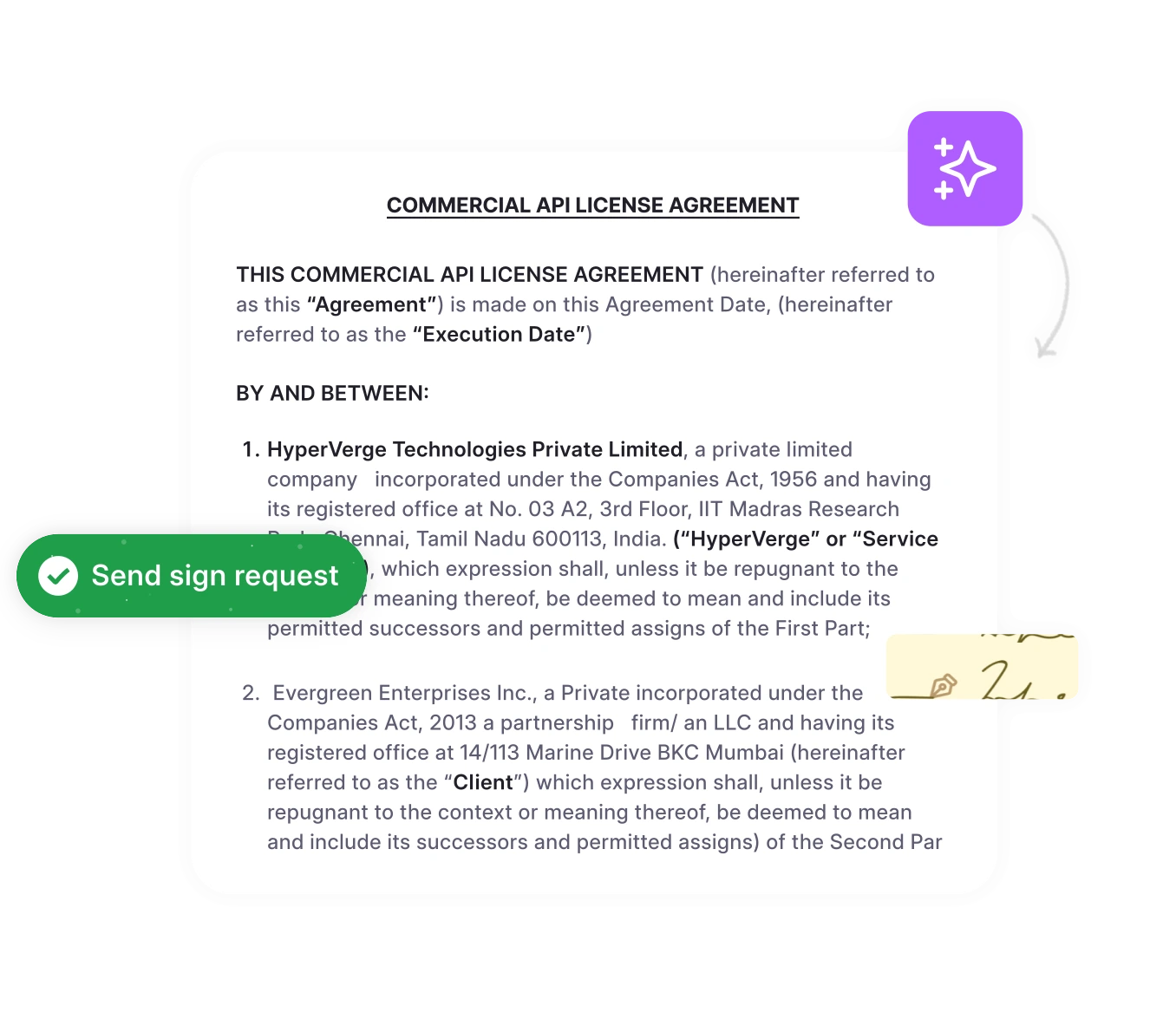Legal teams are under-equipped to do their best work without agile contract management.
Companies implementing agile contract management report improved business outcomes, including faster deal closure, reduced legal bottlenecks, and better alignment between legal and business teams.
This blog explores how agile principles can be applied to contract management, covering everything you need to know to get started. Let’s jump right in.
What exactly is agile contract management?
Agile contract management applies proven agile methodologies to legal operations, creating responsive contract processes that prioritize collaboration, adaptation, and continuous improvement over rigid procedures.
How agile principles are streamlining legal operations
The Agile Manifesto established core principles that translate directly to contract management: “Customer collaboration over contract negotiation.” The core agile values, when adapted for contracts, fundamentally shift how legal teams approach their work:
- Individuals and interactions over rigid processes
- Working agreement and pre-approved templates over comprehensive documentation
- Customer collaboration over contract negotiation
- Responding to change by following a plan
Core components that make contracts agile
| Components | Description | Characteristics |
| Sprint-based contract development | Organize work into focused, time-boxed sprints—typically 2-week cycles for contract creation and negotiation. | Sprint planning Daily standups Sprint reviews Retrospectives |
| Building minimum viable contracts (MVC) | Rather than creating comprehensive agreements upfront, teams start with essential contract templates and expand iteratively. | Risk-based prioritization Conditional logic for approvals Stakeholder feedback loops |
| Cross-functional collaboration models | Successful agile contract management requires collaboration across departments. | Legal as facilitator Continuous collaboration Shared ownership |
Also read A Comprehensive Guide to Simple Contracts
4 Types of agile contracts that accelerate deal closure
Different commercial scenarios require specific contract structures that balance flexibility with risk management.
1. Time and materials agreements
These contracts provide maximum flexibility through transparent cost structures with clear hourly rates and expense tracking. Velocity-based pricing ties payments to actual delivery speed and quality, while budget caps protect against scope creep without sacrificing adaptability.
Focus on outcome-driven specifications. Instead of prescribing “10 consultants at 40 hours weekly,” define deliverables: “System functionality per Attachment A within agreed timeline and budget parameters.”
2. Incremental delivery contracts
Phased value delivery creates regular feedback opportunities through milestone-based agreements with clear acceptance criteria. Built-in adjustment mechanisms allow scope modifications based on learnings from each phase. This iterative approach reduces project risk while maintaining momentum.
Structure these with multiple timelines, dividing work into discrete deliverables with individual due dates. Each phase should have specific acceptance criteria and predetermined review points.
3. Fixed price contracts with agile flexibility
Firm fixed price contracts can incorporate agile principles through predetermined review points and change order protocols. These agreements establish baseline costs while allowing controlled modifications based on evolving requirements. The collaborative approach balances cost certainty with operational flexibility.
4. Framework agreements
Master Service Agreements (MSAs) with agile statements of work provide enterprise scalability through modular contract components and quick activation mechanisms.
For companies that source a large volume of professional services, a pre-approved contract design structure can be an efficient and effective approach. We recommend using a Master Services Agreement with work order templates for each engagement type.
To further streamline the contracting process, the MSA can include provisions for taking certain orders “off paper” and providing digital coverage for specific order types, such as T&E orders and certain Project or Agile Team orders. This approach can help accelerate the contracting process and reduce administrative overhead.
Framework agreements enable teams to execute work orders in days rather than weeks, supporting business agility while maintaining legal protections.
Start your agile CLM journey
Transform rigid processes into flexible, responsive operations
Book a DemoImplementing agile contract management
Phase 1: Foundation
Implementation begins with assessment and team formation:
- Current state analysis: Map existing processes, identify pain points, and quantify inefficiencies
- Pilot contract identification: Select 3-5 contract types suitable for agile approaches
- Cross-functional team formation: Assemble stakeholders from legal, business, and IT
- Success metrics definition: Establish baseline measurements and improvement targets
Also read, Who is a Contract Manager [Roles + Skills + Responsibilities]
Phase 2: Pilot program execution
The pilot phase tests agile approaches on selected contract types:
- MVP template creation: Develop minimum viable contract templates
- First sprint execution: Run initial 2-week cycles with selected contracts
- Feedback collection: Gather input from all stakeholders on process effectiveness
- Iteration and refinement: Adjust approaches based on real-world learnings
Phase 3: Scaling successful practices
Successful pilot learnings are expanded across the organization:
- Process expansion: Apply refined approaches to additional contract types
- Technology implementation: Deploy supporting CLM tools that enable agile workflows
- Team training: Educate broader teams on new processes and expectations
- Workflow optimization: Continuous refinement based on expanded usage
Phase 4: Continuous optimization
Agile principles emphasize continuous improvement:
- Regular retrospectives: Scheduled reviews of process effectiveness
- Technology enhancement: Ongoing optimization of supporting tools and systems
- Cultural reinforcement: Maintain agile mindsets through training and leadership support
- Process optimization: Data-driven improvements to workflow efficiency
For instance, How to Optimize Freight Contract Management covers these steps comprehensively
Technology that enables agile CLM
Essential platform features
Modern contract management platforms support agile workflows through:
- Workflow automation: Configurable processes that adapt to different contract types
- Real-time collaboration: Simultaneous editing and comment threads for faster iteration
- Version control and branching: Track changes and enable parallel workstreams
- Analytics and dashboards: Data-driven insights for continuous process improvement
Integration for a collaborative approach
Successful agile contract management requires integration across technology stacks:
- Jira integration: Contract task management and sprint planning
- Slack or Teams: Daily standups and real-time communication
- Confluence: Centralized playbooks and process documentation
- Analytics platforms: Performance tracking and bottleneck identification
AI-powered automation capabilities
While current machine-learning methods focus on trying to create more accurate forecasts, ours focuses on making actual decisions. This new methodology, which we call optimal machine learning.
This model can take into account a company’s priorities (such as the level of customer service it is contractually obligated or wishes to achieve), its budget restrictions, and other resource constraints (such as the availability of materials and labor). The data is stored in a way that enables updating in near real time and quick revision of the calculations that inform decision-making.
The same principles apply to contract management:
- Automated clause suggestions
- Risk assessment, scoring, and prioritization
- Predictive analytics for negotiation strategies and outcomes
Using HyperStart’s AI review, we get a first cut review in less than 1 minute, reducing contract review time from 4-6 hours to just 2 hours.

Om Prakash Pandey
Head on Legal
Also read: How to Manage IT Contracts Effectively
Measuring agile contract management success
Velocity metrics
- Target of 20+ standard contracts per 2-week cycle
- Go from request to signature in 24-48 hours
- Data-driven analysis of process bottlenecks
Agile teams track productivity through specific velocity measurements:
Quality indicators
- Missed renewal frequency
- Adherence to regulatory and internal policy requirements
Speed without quality creates long-term problems. Key quality metrics include:
Business value indicators
Ultimate success is measured through business impact:
- Faster contract cycles enabling quicker deal closure
- Lower legal costs per contract through efficiency gains
- Reduced exposure through better contract terms and compliance
- Better support for business objectives through flexible processes
Wrapping up
Agile contract management represents a fundamental shift from rigid, sequential processes to flexible, iterative approaches that better serve modern business needs. By applying proven agile methodologies to legal operations, organizations can achieve significant improvements in cycle time, stakeholder satisfaction, and business alignment.
Frequently asked questions
Also read 10 Best Contract Management Tools.









![Who is a Contract Manager? [Roles + Skills + Responsibilities]](https://www.hyperstart.com/wp-content/uploads/2025/02/Blog-33-white-scaled.webp)

